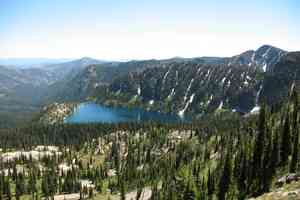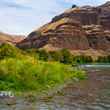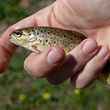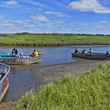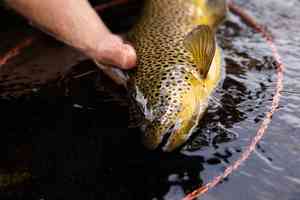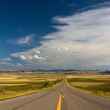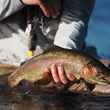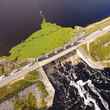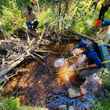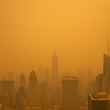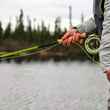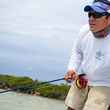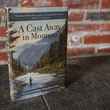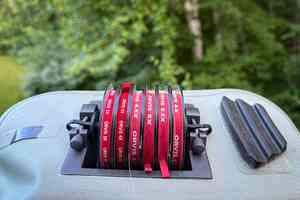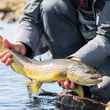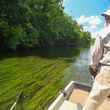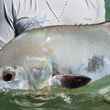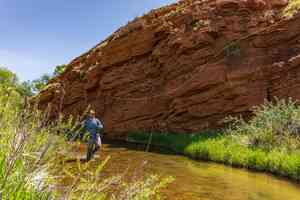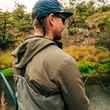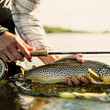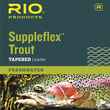
Photos: Earl Harper and Chad Shmukler, Words: Chad Shmukler.
When leaving the hustle and bustle of Buenos Aires' international airport, you'll see groups of anglers peppered throughout the masses of travelers assembling outside the customs exit—chatting with newly arrived companions, meeting with drivers that will shuttle them across town to the domestic airport, piling and stacking bags of gear. Almost all of them are headed south. And west. In search of trout in Patagonia or Tierra del Fuego. But instead of shuttling across town to catch a flight to San Martin, Bariloche or Rio Grande, we're prepping to ride north. North to Corrientes, to the Iberá Marshlands, the second largest wetland on the entire globe, a region twice the size of the entirety of the Florida Everglades, and home to seemingly countless rivers, creeks, streams, sloughs, lakes and ponds where the golden dorado is king.
Almost entirely protected as a nature preserve since 1983, the Iberá Marshlands—or Esteros del Iberá—is known for its crystal-clear, unpolluted waters. Due to the region's unique geology, the marshlands are a nearly closed system with no inflow—other than rainfall—and only minor outflow. The region is also uninfluenced by mining or industry, due to the lack of either in proximity of the marshlands.




![Life of all forms abounds in the marsh, which is known for staggering biodiversity. Over 4,000 different species of plants and animals, including over 350 species of birds, call Iberá home (photos: Earl Harper [top], Chad Shmukler [bottom]). Iberá marshlands vegetation](https://www.hatchmag.com/sites/default/files/styles/preload/public/enpira-6.jpg?itok=sEAIlSA7×tamp=1548345381)







![Dorado that fail to put on a show before being corralled and released are virtually non-existent. The only question once a connection is formed with one of the marsh's voracious predators is how many times and how high they'll leap (photo: Chad Shmukler [top], Earl Harper [middle, bottom]). golden dorado - Iberá marshlands](https://www.hatchmag.com/sites/default/files/styles/preload/public/enpira-14.jpg?itok=hCUktOwK×tamp=1548346549)




![The river, like the rest of Iberá, offers consistent fishing for dorado and can be home to some of the marsh's bigger fish (photo: Earl Harper [top], Chad Shmukler [bottom]). golden dorado - Iberá marshlands](https://www.hatchmag.com/sites/default/files/styles/preload/public/enpira-17.jpg?itok=T17zRCD9×tamp=1548346549)




![Which, unsurprisingly, often hold some of the marsh's most zealous and impressive dorado (photos: Earl Harper [top, middle], Chad Shmukler [bottom]). golden dorado - Iberá marshlands](https://www.hatchmag.com/sites/default/files/styles/preload/public/enpira-24.jpg?itok=tStIvlWK×tamp=1548346549)

For more information on fishing the Ibera Marshlands for golden dorado, visit Pira Lodge.
